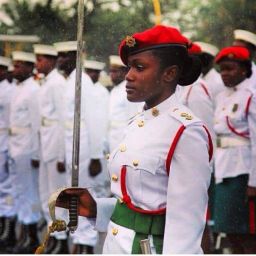
Earlier this month I had the pleasure of watching the young women of St. Albans Episcopal Church perform the Maypole dance at the annual Guyana Folk Festival held in Brooklyn, NY. I remember doing this as a little girl growing up in Guyana dressed up in frilly dresses and socks with colorful hair bows, as we danced and weaved the ribbons to the sound of music. Watching this recreated many, many years later brought back sweet memories. A maypole is a tall wooden pole erected as a part of various European folk festivals, around which a maypole dance often takes place. Below is a little history of the maypole tradition and dance.

The festivals may occur on May Day or Pentecost (Whitsun), although in some countries it is instead erected at Midsummer. In some cases the maypole is a permanent feature that is only utilised during the festival, although in other cases it is erected specifically for the purpose before being taken down again.
THE DANCE: Maypole dancing is a form of folk dance from Germany, England, and Sweden. There are two forms. The first and most popular consists of dancers that perform circle dances around a tall, garland-festooned pole. In the second, dancers move in a circle, each holding a colored ribbon attached to a much smaller pole. As they move around the pole, the dancers intertwine their ribbons either in a web around the pole or to plait it to the pole, itself. To unravel the ribbons, the dancers retrace their steps. Historians believe the first maypole dance originated as part of Germanic pagan fertility rituals. Originally, the dancers danced around a living tree. While dancers usually perform this dance in the spring on May 1 or May Day, those in Sweden perform it during their midsummer celebrations.












yes michelle your granny inez made me do it until i was old enough to say no ,
May pole in September …?
Yes I did, when I was a student at MHS. Loved it!
YES